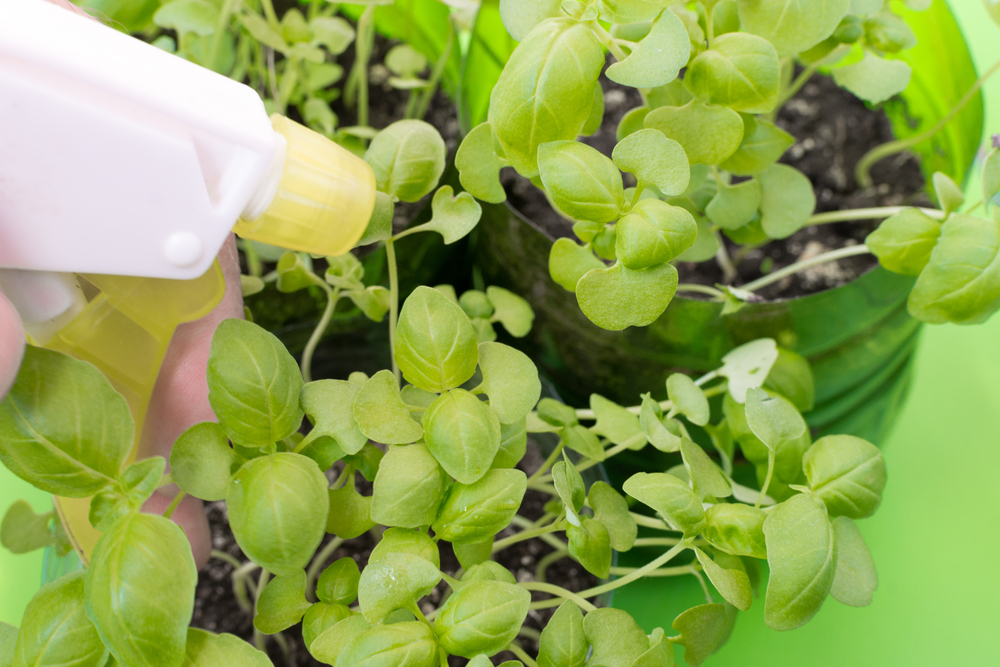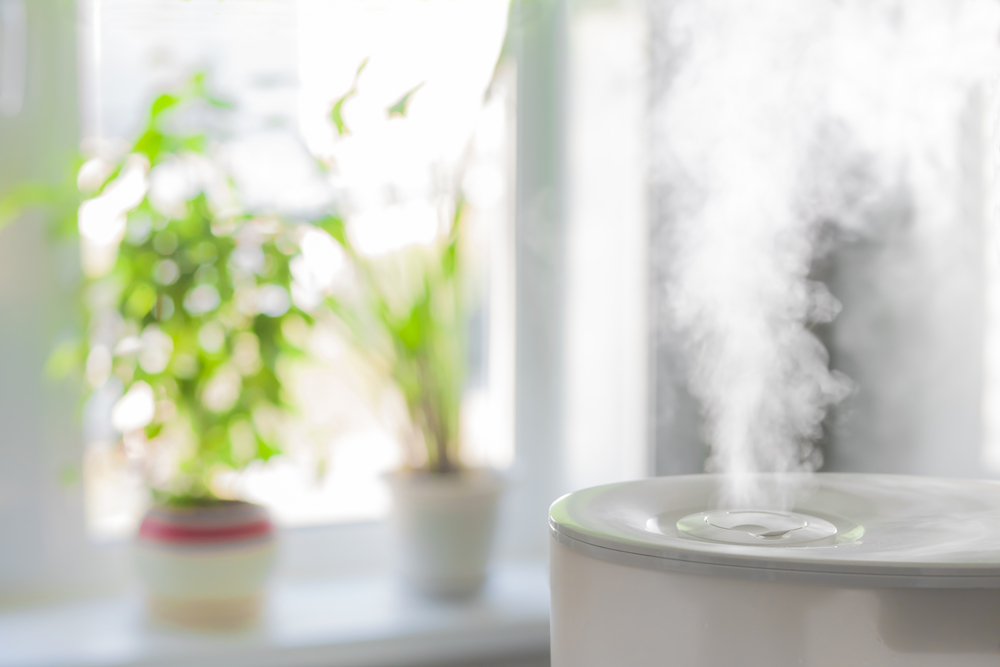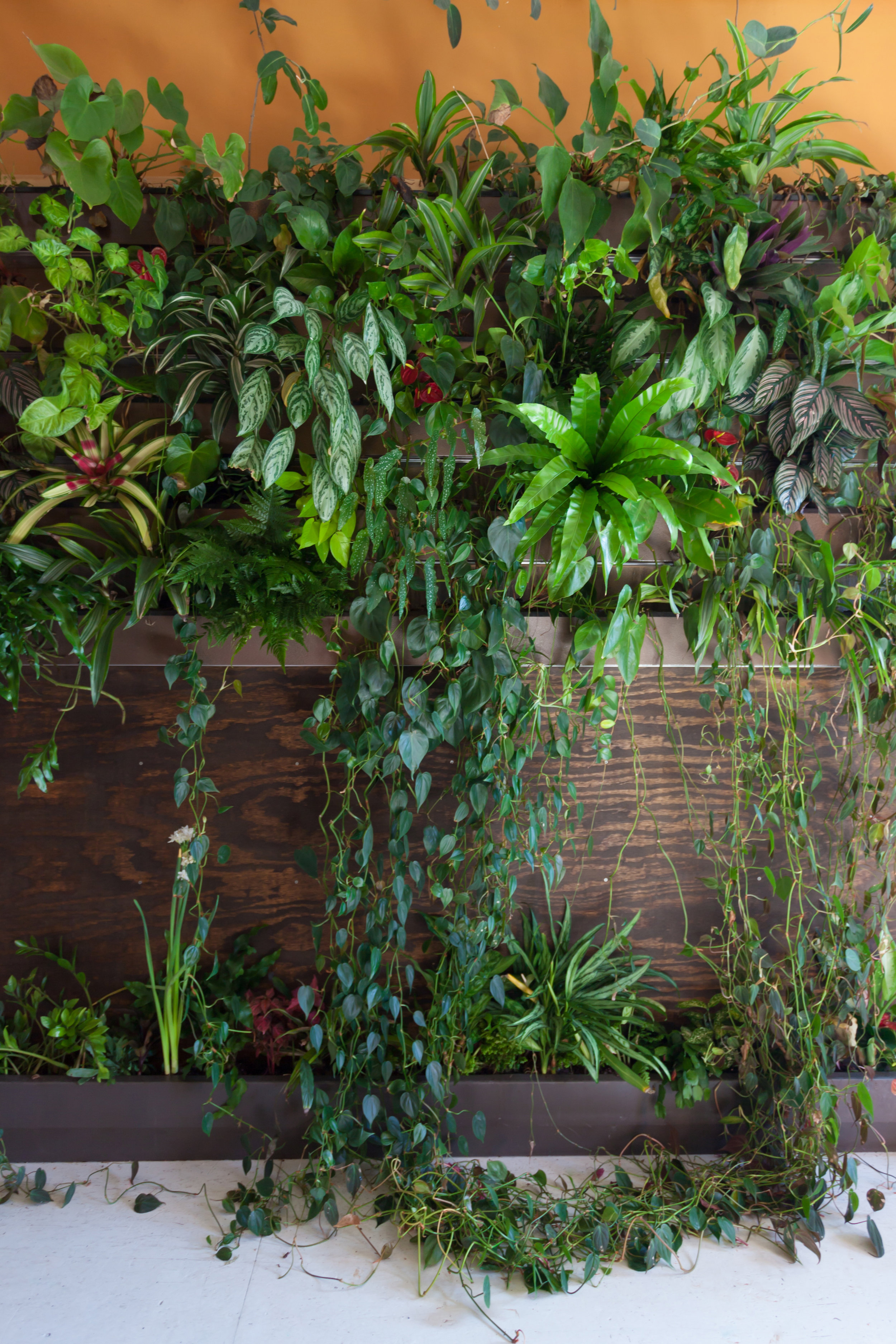If you're noticing your plants suffer, particularly in the wintertime, it may be due to lack of humidity. Since many indoor plants are tropical varieties, they often appreciate a little extra moisture in the air. However, dry heat in homes doesn't always provide for the best environment.
My home, particularly in winter, is extra, extra dry. I have an old Modine Hawt Dog heater, (nicknamed "The Monster"), that you'd typically find in a garage; when it turns on periodically, it successfully warms up—but also dries out the whole house. The lack of humidity in your home is also the reason why your skin may be dry as well, so just think how our plant friends feel!
If a plant is faced with dry heat and low humidity, then moisture will be wicked more easily from the plant's leaves and you may notice leaf edges starting to turn crisp and brown. This means the plant will likely need more watering and a more humid environment. Here are some simple ways to increase humidity indoors, particularly in winter weather:
A mister is a cost-effective and simple way to increase humidity for plants during the winter months. Depending on the species and how dry it is in your home, you may want to mist several times a day.
Mist plants
One of the simplest ways to bring at least a little humidity to the plant's surrounding environment is by misting its leaves with filtered or distilled water. This increases moisture around the proximity of the plant, and depending how dry it is and the species of plant, you may need to mist several times a day, although if you truly want to build up the humidity, you'd have to mist it even more than that—and at that stage, it's probably best to get a humidifer.
Make some pebble trays
Pebble trays are another easy DIY solution to increase humidity around a plant. You typically don't want a plant's roots sitting in water, so to prevent that from happening, add clean pebbles in a shallow water-filled tray. Place the plant on top of the tray. The water will gradually evaporate around the plant, boosting humidity.
Humidifiers generally run in the $30-$250 price range, and are highly effective at bringing up humidity levels in the home. I ended up purchasing a BONECO ultrasonic humidifier and a smaller VicTsing humidifier for my plants.
Get a humidifier
I almost never run my humidifier in the summer months, but I do turn it on nearly every day during the winter, particularly in an area of my home where I have a lot of humid-loving plants, like Calatheas, Marantas, Tillandsia, ferns, and mosses. Many people express concern for water damage in the home—or growth of mold—and you should definitely keep an eye out for that, but one of the ways I try to curb any damage in the home is by having my humidifier up higher and not placed directly on the floor.
Huddle your plants
If you have enough plants in a corner of your house or room, that part of the room will often be a bit more humid, compliments of the plants. This is not only better for us human folk living in a home, but also for plant species that prefer a little more humidity.
Give your plants a bath (or shower)
The bathroom is typically the most humid area of the home. My bathroom is quite small and the combination of having the washer/dryer, the water heater and the shower provides for a perfect environment for plants. I'll often remove my Staghorn fern (Platycerium superbum) from the wall in the kitchen and place it in the shower with me. Additionally on Sundays, I often give some of my high humidity plants a little lukewarm shower for 30 seconds. That alone has improved the condition of my plants over the winter months.
Create a terrarium environment
Terrariums are typically semi-open or closed glass environments, which certain plants, particularly more moisture-loving plants, tend to thrive in. The glass globes for Tillandsia or air plants are not only for aesthetic reasons, but also because the contained environment helps increase the humidity around the plant as evapotranspiration occurs from the plant's leaves. You can also create a simple, homemade terrarium with a clear plastic bag around the plant—something that I did when I was rooting some of my angel wing begonias (Begonia aconitifolia).
Have any other great solutions for helping bring humidity indoors? Share in the comments below. 🌿




